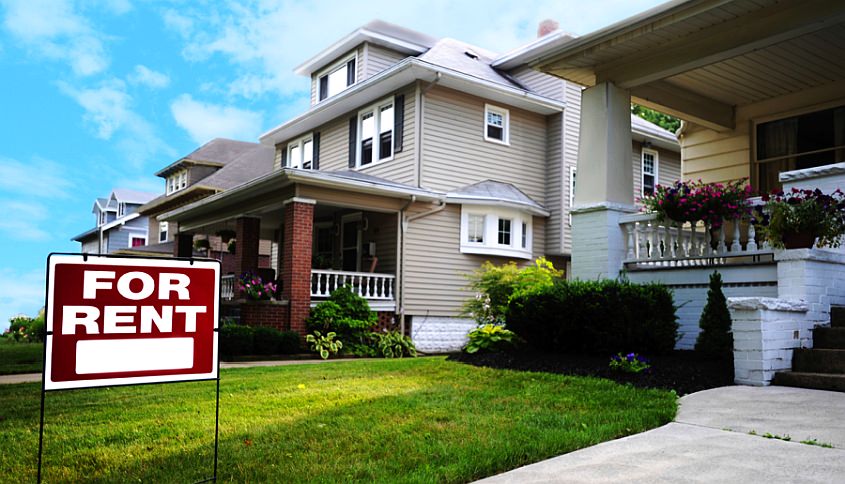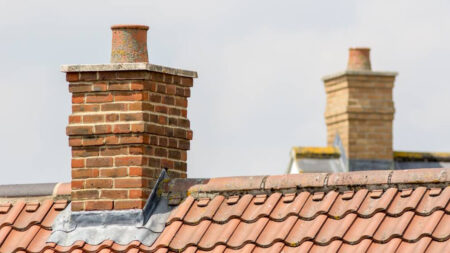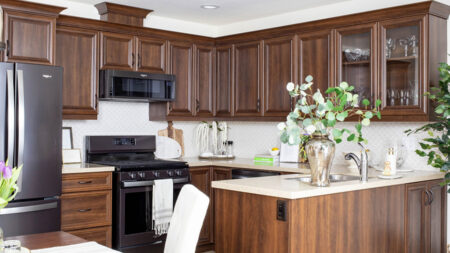Spending time with nature especially plants is believed to boost mental health. Most people who live in cities miss this opportunity but they do seek ways to make a green connection somehow. That is why during harvest season, some individuals and families love to visit farms. But there is a way to have your little farm at home with minimum hassle. The trick is using raised garden beds, which lets you grow whatever you wish.
If you have unused space in your property – a backyard, front yard, or even a balcony – you can make it purposeful with raised garden beds. Yes, they also work in your balcony space, with just a wee bit of design tweaking.
When considering how to maximize garden space, raised beds are convenient and have emerged as a favorite among gardening enthusiasts. This article explores the numerous reasons behind the widespread appeal of this trending option and offers practical insights on how to incorporate them into your home garden layout.
What are Raised Garden Beds?
For those who are unaware of these beautiful structures, allow us to enlighten you. Raised garden beds are elevated planting structures that sit above ground level, typically enclosed by materials like wood, stone, or metal. These beds are filled with high-quality soil and compost, allowing gardeners or homemakers to grow plants in a controlled environment.
The raised height improves drainage, reduces soil compaction, and offers easier access for planting and harvesting, which is particularly beneficial for those with joint pains, and limited mobility like the elderly and differently-abled individuals. Raised beds also help keep weeds and pests at bay, making them a popular choice for growing vegetables, herbs, and flowers in both small and large gardens.
History and Evolution of Raised Garden Beds
The concept of raised garden beds has evolved over centuries and cannot be attributed to a single individual or culture. Ancient civilizations, such as the Egyptians and the Mayans, used raised planting methods to improve irrigation and drainage in challenging environments. Similarly, the Chinampas of the Aztecs were a type of raised garden bed, where crops were grown on small, artificial islands in shallow lakes.
In modern times, raised beds have become popular in modern gardening due to the influence of various agricultural movements, including the French intensive gardening method and the rise of urban gardening. These methods promoted the use of raised beds to maximize small spaces and improve soil quality, particularly in areas where the ground soil was unsuitable for planting.
The popularity of raised garden beds has grown significantly in the 20th and 21st centuries, especially as they offer practical benefits for home gardeners and urban environments. Today, they are widely used for their versatility, accessibility, and ability to create controlled growing conditions.
Appeal of Raised Garden Beds
There are plenty of reasons why more and more people are opting for raised garden beds. This new-age gardening style offers improved soil quality, enhanced drainage, better weed control, easy access without having to bend over while working, and much more.
Improved Soil Control
One of the primary advantages of raised garden beds is that they enable enhanced soil quality control. Unlike traditional in-ground gardens, raised beds allow you to create a custom soil mix tailored to the specific needs of your plants. This is especially beneficial in areas with poor soil conditions, such as heavy clay or compacted soil.
Optimal Drainage
Raised beds promote superior drainage, preventing waterlogging and root rot. The elevated structure ensures that excess water drains away efficiently, creating a healthier environment for plant growth.
Reduced Weed Growth
Raised beds naturally discourage weed growth by creating a physical barrier. This significantly reduces the time and effort required for weed removal, making gardening a more enjoyable experience.
Accessibility and Ergonomics
The elevated height of raised garden beds makes them more accessible for individuals with limited mobility, especially elders who love to indulge in activities like gardening and flaunt their produce with the family.
Extended Growing Season
Raised beds warm up faster in the spring, enabling earlier planting and extending the growing season. This is particularly advantageous in colder climates where the growing season is shorter.
Aesthetic Enhancement
Raised garden beds can be attractive focal points in your landscape design. Their structured appearance adds visual charm and can be customized to complement your home’s architectural style. These also allow easy installation of arches to grow vining plants such as beans and tomatoes.
Pest and Disease Control
The controlled environment of raised beds makes them less susceptible to pests and diseases. By carefully selecting plant varieties and practicing good garden hygiene, you can further minimize the risk of problems.
Common Tools Used With Raised Garden Beds
Several tools can make the process easier and more efficient when setting up and maintaining raised garden beds. Here are the essential tools you’ll need:
Shovel: For digging, moving soil, compost, or mulch into the raised bed.
Garden Rake: Helps level the soil and break up clumps to create a smooth, even surface for planting.
Trowel: A small hand tool used for planting seeds, seedlings, or small plants.
Wheelbarrow: Useful for transporting soil, compost, and other materials to and from the raised bed.
Hoe: Helpful for breaking up soil, removing weeds, and preparing the planting area.
Measuring Tape: To ensure accurate dimensions and proper spacing when setting up the raised bed structure.
Level: Ensures the bed is even, which is important for water drainage and plant growth.
Pruners: For trimming plants, deadheading flowers, or cutting back overgrown vegetation.
Gloves: Protect your hands from dirt, splinters, and blisters while handling materials and working with plants.
Watering Can or Hose: Essential for keeping your plants hydrated, especially in the early stages of growth.
Also Read: An Expert Guide on How to Care for and Maintain Garden Tools
Size of Raised Garden Beds
The general dimensions of raised garden beds vary based on available space, the plants being grown, and the gardener’s needs. However, here are some common dimensions:
Width: Typically 3 to 4 feet wide. This width allows easy access to the center of the bed from both sides without stepping on the soil, reducing soil compaction.
Length: Lengths vary widely, but 6 to 8 feet is common. The length depends on available space and personal preference. Some beds can be as long as 12 feet or more.
Height (Depth): The height is usually 6 to 12 inches. For plants with deeper roots, a depth of 18 to 24 inches is recommended.
These dimensions can be adjusted depending on your space and plant needs, but the general goal is to make them manageable for both plant growth and maintenance.

Versatility Offered by Raised Garden Beds
Vegetable and Herb Gardens
Raised garden beds are ideal for growing a wide variety of vegetables, flowers, and herbs. Their compact size and efficient use of space make them perfect for small gardens or urban settings.
Flower Gardens
Create stunning floral displays with raised beds. The elevated height showcases your blooms and allows for easy maintenance and deadheading.
Pollinator Gardens
Attract beneficial insects like bees and butterflies by planting a mix of nectar- and pollen-rich flowers in raised beds. This supports biodiversity and contributes to a healthy ecosystem.
Vertical Gardens
Maximize space by incorporating vertical elements into your raised bed design. Trellises, hanging baskets, and stacked planters can add visual interest and increase your growing area.
Edible Landscaping
Integrate raised beds into your existing landscape design to create an edible landscape. Plant fruit trees, berry bushes, and edible flowers alongside ornamental plants for a beautiful and functional garden.
Patio and Deck Gardens
Raised beds are perfect for patios and decks, where they can add greenery and create a sense of outdoor living. Choose compact varieties and utilize vertical gardening techniques to make the most of limited space.
Also Read: Understanding Prefabricated Wooden Construction for Gardens
Practical Tips for Raised Bed Gardening
Choose the Right Location: Select a sunny spot with good drainage for your raised beds. Most vegetables and herbs require at least six hours of direct sunlight per day.
Build or Buy: You can either build your own raised beds using wood, bricks, or other materials or purchase pre-made kits for convenience.
Fill with Quality Soil: Use a high-quality soil mix that is well-draining and rich in organic matter. Avoid using soil from your garden, as it may contain weed seeds or pests. However, you can add finely chopped wood, twigs, and leaves at the bottom of your raised bed to cut the cost of soil. As these materials break down, they will add vital nutrients to your garden. You can keep topping the bed with more soil and compost as the levels go down.
Plan Your Layout: Consider the fully grown of your plants when planning your layout. Leave enough space between plants to allow for adequate airflow and growth. However, you can grow plants that grow well in shade between your sun-requiring plants to make the most of the limited space.
Water Deeply and Regularly: Raised beds tend to dry out faster than in-ground gardens. Water deeply and regularly, especially during hot weather. Try watering early morning or in the late evening so your plants have enough time to absorb water before it evaporates.
Mulch to Conserve Moisture: Apply a layer of organic mulch, such as straw or wood chips, to help retain moisture, suppress weeds, and regulate soil temperature.
Fertilize as Needed: Feed your plants with a balanced fertilizer according to the needs of your specific crops. Organic fertilizers are a good option for maintaining soil health.
Rotate Crops: Practice crop rotation to prevent soilborne diseases and pests. Avoid planting the same type of crop in the same bed year after year.
Monitor for Pests and Diseases: Keep a close eye on your plants for signs of pests or diseases. Take prompt action to address any problems before they spread.
Final Thoughts
Raised garden beds offer a multitude of benefits for home gardeners, from improved soil control and drainage to increased accessibility and aesthetic appeal. Their versatility suits virtually any garden design, and novice gardeners can use them to good effect as much as experienced gardeners.
FAQs About Raised Garden Beds
Q. What are the benefits of using raised garden beds?
A. Raised garden beds offer better soil control, improved drainage, easier access for planting and maintenance, reduced weed growth, and protection from some pests. They also extend the growing season by warming up faster in spring.
Q. What materials are best for building raised garden beds?
A. Common materials include untreated wood (like cedar or redwood), galvanized metal, concrete blocks, and stone. Untreated, rot-resistant wood is a popular choice due to its natural appearance and durability.
Q. How deep should a raised garden bed be?
A. Raised garden beds should generally be at least 6 to 12 inches deep. However, for plants with deeper roots (like carrots or tomatoes), 18 to 24 inches is ideal.
Q. What kind of soil should I use in a raised garden bed?
A. A mixture of high-quality garden soil, compost, and organic matter is recommended. You can also use a specific raised bed soil blend available at garden centers. The key is ensuring the soil is nutrient-rich, well-draining, and loamy.
Q. Do raised garden beds need drainage?
A. Yes, drainage is essential to prevent waterlogging. Most raised beds naturally drain well due to their elevated nature, but it’s a good idea to ensure the soil is loose and well-aerated.
Q. Can I place a raised garden bed on concrete or pavement?
A. Yes, you can place raised beds on hard surfaces like concrete or pavement. Just make sure the bed is deep enough to accommodate plant roots and use a high-quality soil mixture to ensure proper drainage.
Q. How often should I water a raised garden bed?
A. Raised beds tend to dry out faster than in-ground gardens, so they may need more frequent watering, especially in hot or dry climates. The exact frequency depends on weather conditions and the types of plants, but checking moisture levels regularly is key.
Q. Do I need to line the bottom of a raised garden bed?
A. Lining the bottom of a raised bed with landscape fabric or hardware cloth can help prevent weeds and keep pests like gophers and moles from entering. It also helps with soil retention, especially on hard surfaces.
Q. What vegetables grow best in raised garden beds?
A. Most vegetables thrive in raised beds, but popular choices include leafy greens (lettuce, spinach), root vegetables (carrots, beets), tomatoes, peppers, herbs, flowers, and beans. Raised beds are ideal for any plant that benefits from loose, well-drained soil.
Q. How do I prevent weeds in a raised garden bed?
A. Using weed barriers, applying mulch, and ensuring your raised bed soil is weed-free can help prevent weeds. Regular maintenance like hand-weeding also reduces weed growth.
Q. How long will a raised garden bed last?
A. The lifespan of a raised garden bed depends on the materials used. Untreated wood beds can last 5-10 years, while rot-resistant woods like cedar or redwood can last 10-20 years. Metal or stone beds can last even longer with proper care.
Follow Homecrux on Google News!




